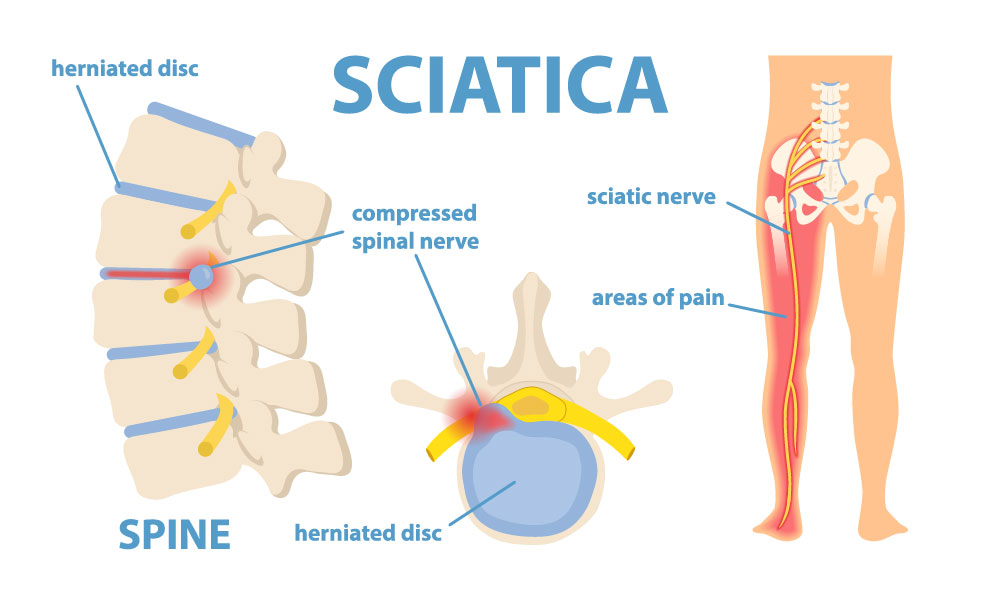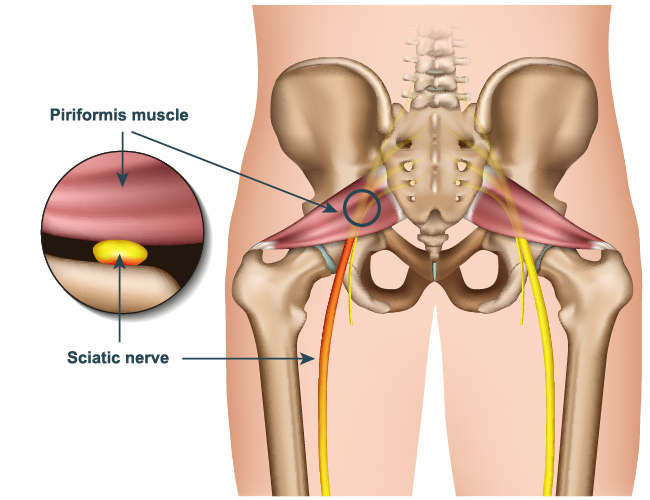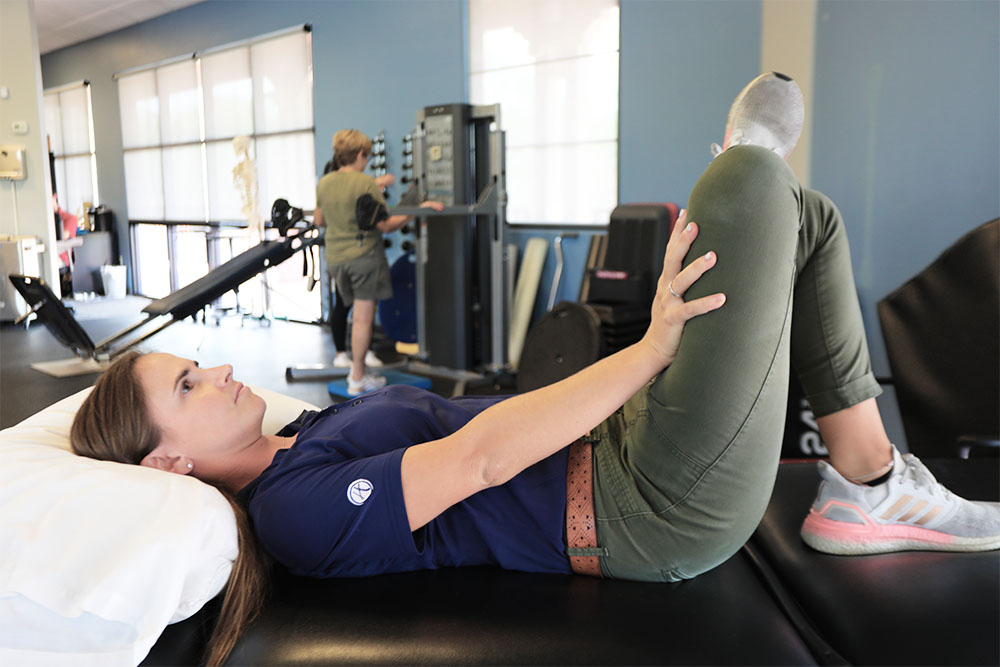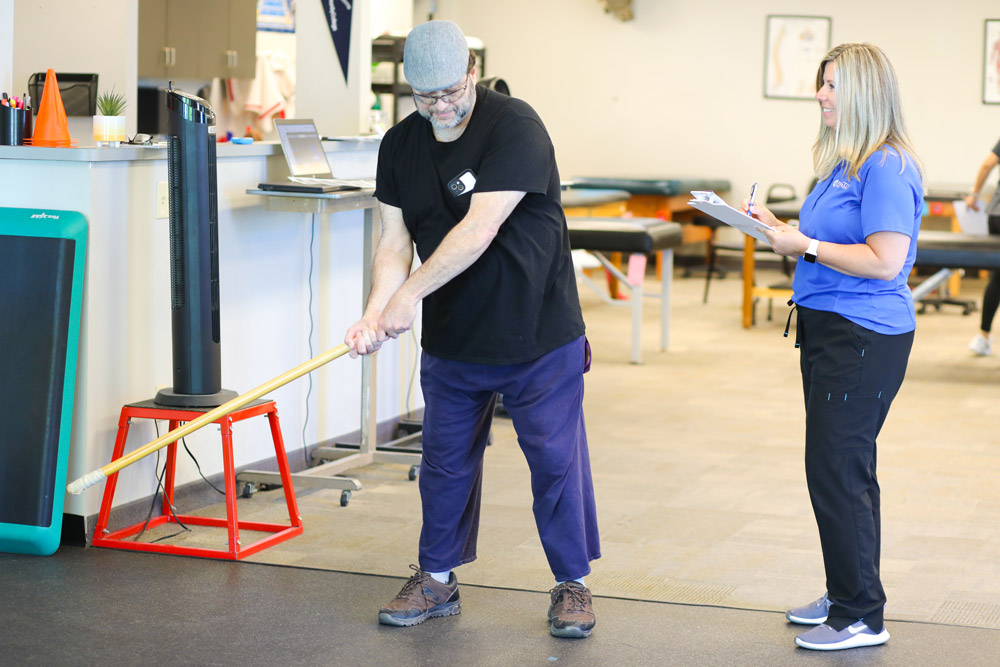Not all pain in the buttocks is the same. For example, pain in the buttocks that radiates down the leg often receives a quick diagnosis of sciatica, which is pain caused by irritation in the nerve. However, piriformis syndrome has similar symptoms that result from a completely different cause. So how do I know if I have sciatica or piriformis?
At ProActive Physical Therapy in Tucson, AZ, our expert physical therapists work with you to identify the cause of your pain and determine the best course of action to provide relief. In dealing with such similar conditions, a professional diagnosis is essential. Otherwise, symptoms may worsen with improper treatment.
What Is Sciatica?
Sciatica is the name for pain that occurs along the path of the sciatic nerve. The sciatic nerve begins in the buttock and is the longest and thickest nerve in the body. It comprises five nerve roots, two from the lumbar spine and three in the sacrum. The five nerve roots meet to form a sciatic nerve on the left and right.
Each sciatic nerve path runs from the hips and buttocks to the leg, ending below the knee, where it branches into other nerves that travel through the leg to the foot and toes.
Most patients have sciatica in only one of their sciatic nerves, with pain affecting only one side of the body. Typically, sciatica occurs due to a herniated disk or another condition in the spine, such as a bone spur or spinal stenosis.
What Is Piriformis Syndrome?
Piriformis Syndrome refers to buttock pain caused by a spasm in the piriformis muscle. Located behind the gluteus maximus, the piriformis muscle sits deep within the buttock. It starts right at the lower spine and connects to the top of the femur, allowing for hip rotation and turning the leg.
The body has two piriformis muscles, one on each side, and they run diagonally, with a sciatic nerve running behind or through the muscle. When the piriformis muscle spasms, it can compress the sciatic nerve, causing the pain and numbness of sciatica. For this reason, piriformis syndrome is also often called piriformis sciatica.
How Do I Know If I Have Sciatica or Piriformis?
One of the difficulties in diagnosing a patient with sciatica or piriformis syndrome is the similarities in symptoms. The symptoms of both conditions include:
- Pain in the buttock and down the back of the leg
- Paresthesia, or a pins-and-needles feeling in the legs
- Pain that worsens with prolonged sitting or repetitive motion
Since these symptoms overlap with both conditions, differentiating between the two requires paying close attention to the areas affected by pain. For example, patients with piriformis are less likely to experience lower back pain than sciatica patients. On the other hand, patients with sciatica may feel like their affected leg is heavy.
In addition to the areas where patients experience pain, some movements affect patients differently depending on their condition. For instance, patients with piriformis feel more pain with hip movements and when sitting for long periods. Patients with sciatica tend to feel pain when they raise the affected leg while lying down.
However, since the pain patterns of both conditions are irregular and tend to radiate in the lower body, patients benefit most from a consultation with a professional to diagnose their condition.
How Can You Tell the Difference Between Sciatica and Piriformis Syndrome?
The skilled physical therapists at ProActive Physical Therapy perform a range of tests to differentiate between sciatica and piriformis syndrome in patients. Since sciatica often originates from spinal dysfunction, diagnosing sciatica usually starts with a test to diagnose a herniated disk (like the LaSeque test). Other tests and evaluations that distinguish between the two conditions include examining the lower back, hip, pelvis, and sacroiliac joint.
In addition, your physical therapist will also look at your gait, posture, reflexes, and leg length. They’ll perform several tests to identify pain and weakness throughout the lower extremities. In these tests, your physical therapist will manipulate joint movements to determine which actions cause the most pain or weakness, isolating the cause of the pain.
How to Relieve Piriformis Sciatica
When your physical therapist determines how to relieve piriformis sciatica, the treatment almost always begins with carefully and progressively stretching the piriformis muscle. These stretches usually target the piriformis muscle through a supine twist or hamstring stretches to alleviate sciatic pain.
In addition, piriformis syndrome treatments also include a range of motion exercises, deep tissue massage therapy, and ice and heat therapy. All offer relief. Over-the-counter anti-inflammatory medications, such as ibuprofen or naproxen, may alleviate pain. Patients may opt for steroid or Botox injections in more severe cases to decrease muscle spasms and pain.
How to Relieve Sciatica
Sciatica pain relief also often begins with physical therapy exercises and stretches to strengthen the muscles in the lower back, pelvis, abdomen, buttocks, and thighs and to improve range of motion.
Patients with sciatica may also benefit from over-the-counter or prescription medications, steroid injections, or, in severe cases, surgery.
Put Your Trust in the Professional Team at ProActive Physical Therapy
Correctly diagnosing and treating your condition plays a critical part in relieving pain. Knowing if you have sciatica or piriformis is important. Therefore, when you’re suffering from ongoing pain, it’s essential to work with an expert team, like the physical therapists at ProActive.
Have you struggled with ongoing pain in your hip, buttocks, and lower back? Let the team at ProActive Physical Therapy help. Our skilled physical therapists offer convenient, specialized treatment plans that work with your specific concerns and conditions in offices throughout the Tucson, AZ, area. We also provide patients with various therapy modalities, including trigger point dry needling, manual nerve glides, and instrument-assisted soft tissue mobilization.
Through a thorough, complimentary assessment, we can identify the cause of your pain and work with you to create a comprehensive plan to put you on the road to recovery.
Regardless of your pain concerns, reach out to the team at ProActive Physical Therapy to schedule your free injury assessment today. Then, let us put you on the road to relief!








